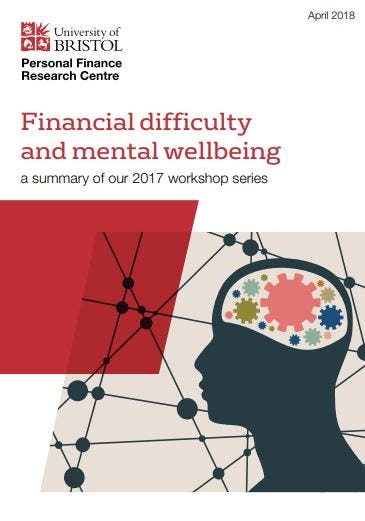by Sharon Collard and Jamie Evans
In this post, we explore key findings from our new research, which looks at the experiences of nearly 1,600 debt advisers when supporting people in vulnerable situations.
At the recent Talk Money conference, we launched new research, in partnership with the Money Advice Trust and the Money and Mental Health policy Institute, looking at debt advisers’ experiences of working with clients in a range of different situations that might make them ‘vulnerable’.
The research was based on a UK-wide survey of 1,573 debt advisers working in approximately 400 organisations and included new data from a survey of nearly 400 individuals with lived experience of mental health problems and debt.
The report, Vulnerability: the experience of advisers, brings together these new findings along with good practice guidance for supporting those in vulnerable situations.
So, what does the report actually tell us?
1. Vulnerability is an everyday occurrence for advisers
Firstly, it’s apparent that advisers across the sector are dealing with clients in very vulnerable situations on a regular basis.
Of the 87 clients that a typical full-time adviser deals with in a working month, they can expect 35 to disclose a mental health problem. A further seven clients tell them about an addiction of some sort, be it a gambling problem, alcohol problem or other substance addiction.
Each week, nearly two-thirds of advisers encounter at least one client with a serious physical illness or disability, over a third see someone with a learning disability and one-in-five help a client who is, or has been, in an abusive relationship.
Lastly, in the last 12 months, nearly three-quarters of advisers encountered at least one client who disclosed suicidal thoughts, and over half seriously believed that at least one client was at genuine risk of suicide.
2. Levels of vulnerability may have increased in recent years
As this is the first time that levels of vulnerability have been measured across the whole advice sector, it is hard to say precisely how things have changed over time.
However, there is certainly anecdotal evidence from the advisers we surveyed that they are seeing more people in more challenging situations than ever before – with the risk that financial vulnerability exacerbates other types of vulnerability and vice versa.
3. This may just be the tip of the iceberg
For the purpose of consistent measurement, we asked advisers in the survey to tell us about those clients who disclosed their situation, rather than all clients that they believed to be in such a situation. This means that our statistics could represent just the ‘tip of the iceberg’.
Indeed, in our survey of advice clients with mental health problems, we found that as many as 44% of people with mental health problems may not disclose their condition when dealing with a debt adviser.
This could equally apply to a range of other situations, such as domestic abuse and addictions. Clients will not tell advisers everything just because they are there to help them and understanding the reasons for under disclosure is important.
4. More support is needed to help advisers deal with these situations
The primary goal of debt advisers is, of course, to help people resolve their debt and money problems; however, in many cases these financial issues cannot be resolved without considering the underlying situation.
Our data shows that more could be done here. For example, at present, 44% of advisers have not received any training on supporting clients with addictions and 56% have not received training in relation to gambling.
Such training though is on the way via the Trust’s Wiseradviser programme which is launching addictions and suicide prevention courses in the New Year.
It is also apparent that many people in vulnerable situations find it challenging to go through the debt advice process. For example, of those we surveyed with mental health problems, 48% reported that making initial contact with the advice agency was difficult, while 56% encountered difficulty in finding the information advisers needed from them.
The guidance and practical tools in our report can help advisers consider some of these issues.
5. But changes to debt advice alone are not enough
Our research also looked at the wider issues that affect advisers’ ability to support those in vulnerable situations. This highlighted the fact that many advisers felt they are working in an environment which makes it difficult for them to provide the very best support for their clients.
It takes time, money and resources to provide the right support, and in many cases advisers felt these are severely constrained. Advisers also noted that there are often situations where clients could benefit from the support of external services, but these simply do not exist locally or are already over-stretched.
While these bigger issues require co-ordination and collaboration from the advice sector and beyond, we hope our research and guidance give frontline advisers and advice organisations some useful additional tools and resources to support their invaluable work with clients in vulnerable situations.
Vulnerability: the experience of debt advisers was funded by the Money Advice Service. The report is available to download here, where you can also find data tables and a resource pack with additional tools to help advisers support those in vulnerable situations.
Further information about Wiseradviser training is available here: www.wiseradviser.org.
This article was originally published as part of the Money Advice Trust’s Thoughts at the Trust blog series. Read the original article here.





